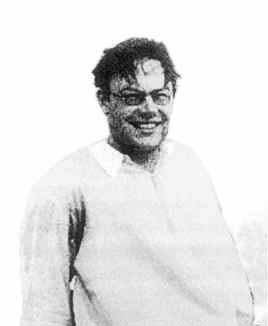| Profile | Major Works | Resources |
Frank Plumpton Ramsey, 1903-1930.


The Cambridge philosopher Frank P. Ramsey died tragically at the age of 26. A wunderkind of first order, Ramsey had already written three important contributions to economics. The first, "Truth and Probability" (written in 1926, published 1931), was the first paper to lay out the theory of subjective probability and begin to axiomatize choice under (subjective) uncertainty, a task completed decades later by Bruno de Finetti and Leonard Savage. This was written "in opposition" to John Maynard Keynes's own information-theoretic Treatise on Probability. Ramsey's second contribution was his theory of taxation (1927), generating the famous "Boiteux-Ramsey" pricing rule. Ramsey's third contribution was his exercise in determining optimal savings (1928), the famous "optimal growth" model -- also known as the "Ramsey model" -- one of the earliest applications of the calculus of variations to economics.
The young Ramsey helped in the translation of Ludwig Wittgenstein's notoriously difficult Tractatus Logico-Philosophicus (1922) - Ramsey was also among the first to review it and even served as the great philosopher's thesis supervisor at Cambridge. The gracious (if anachronistic) acknowledgement to Ramsey by Piero Sraffa in the preface to his 1960 Production of Commodities by Means of Commodities is a testament to the impact of the youthful scholar on those about him. Perhaps John Maynard Keynes put it right when he said: "When [Ramsey] he descended from his accustomed stony heights, he still lived without effort in a rarer atmosphere than most economists care to breathe" (Keynes, 1933: p.239)
|
Major Works of Frank P. Ramsey
|
HET
|
|
Resources on Frank Ramsey
|
All rights reserved, Gonšalo L. Fonseca
